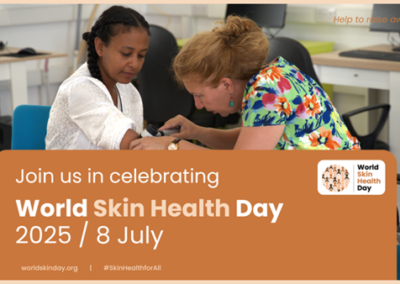Written by Susan O’Connell, Louise Crathorne, & Sneha Bhadti
In the realm of healthcare innovation, the European Union (EU) is paving the way with the Joint Clinical Assessment (JCA) process
In this background article, Source aims to highlight some of the key features of the EU JCA, and as we move towards implementation of the EU JCA in 2025, Source will be following progress and developing a series of articles to discuss the new process and the possible implications for people working in the health technology assessment (HTA) arena.
EU HTA Regulation
In January 2022, the European Parliament passed a new EU HTA regulation, an HTA working structure for Europe, which will govern the European cooperation between medicine regulators and HTA bodies going forward. The regulation aims to improve access to innovative health technologies and strengthen the quality and efficiency of HTA across the Union. It replaces the current voluntary JCA system with a permanent framework for joint work under which the European Medicines Agency (EMA) and HTA bodies will collaborate in the development of joint clinical assessments and scientific consultations, and in the identification of emerging health technologies. The HTA regulation becomes applicable at the European level for oncology products and advanced therapy medicinal products (ATMPs) as early as 12 January 2025. Orphan medicines will require EU JCA from January 2028, and all other medicines launching in the EU will require EU JCA from January 2030.
Currently, pharmaceutical and medical technology companies must submit separate evidence in all 27 EU markets. Under the new regulation, the JCA process aims to centralise and standardise the evaluation of medical technologies, creating a sustainable system of knowledge-sharing and promoting good practice for HTA methods and processes. This harmonised approach to assessments is also anticipated to reduce duplication and regulatory burden and is expected to particularly benefit smaller markets lacking the resources or expertise to conduct assessments independently. Prior to implementation of the regulation in 2025, the procedural and methodological framework for the JCA is to be outlined through a series of six Implementation Acts, each of which will be open for public consultation. Consultation on the first draft Act closed in April 2024 with feedback received available to review (Draft Act 1), while the second draft Act is currently open for consultation until July 2024 (Draft Act 2). Final methodological and process guidelines for JCA are expected by the end of 2024.
As part of the regulation, the new EU HTA Coordination Group (HTACG) will oversee the implementation of joint clinical and scientific assessments. There are four HTACG subgroups, one each for joint clinical assessment, joint scientific consultation, identification of emerging technologies, and development of methodological and procedural guidance. Two subgroups (joint clinical assessment and joint scientific consultation) will be responsible for delivery of JCA reports with each technology undergoing assessment being assigned an assessor and a co-assessor.
The two key stages for JCA development will be the scoping stage (including population, intervention, comparator, outcomes [PICO] development), and development of the JCA dossier.
Scoping and defining the PICO
The JCA scoping and PICO development process will involve companies, and will allow Member States to indicate their own national needs through completion of a PICO survey. These PICOs will then undergo a consolidation and validation process before the final list is shared with companies, forming the foundation of the JCA dossier. The final list of PICOs will be available to companies within 90 days of the submission deadline and should cover the requirements of all 27 Member States.
The JCA dossier and output
HTA developers such as manufacturers and companies will be responsible for completing the JCA dossier using available clinical evidence to address the consolidated PICOs.
The JCA dossier is organised into six sections:
-
- Overview, including administrative information and executive summary
- Background (health problem and current clinical practice), description and technical characteristics of the technology, and information on joint scientific consultation
- Research question and scope
- Methods
- Results
- Underlying documentation (e.g. for medicinal products: full texts of references, documentation of information retrieval, programming code used for analyses, study reports, clinical safety and efficacy data included in the submission file to the EMA, HTA reports of the health technology subject to the JCA, information on studies based in registries, and information on joint scientific consultation).
The assessor and co-assessor will review the completed JCA dossier and produce a summary JCA report that will be made available to Member States. The final JCA report will serve as a comprehensive reference for treatment effects, safety, and other clinical parameters established during the scoping process. It will also encompass the clinical domain and technical specifications of the technology.
Discussion
The JCA provides an objective summary of clinical evidence with Member States still retaining responsibility for making their own conclusions on the level of clinical benefit. The JCA will not assess cost-effectiveness nor will it make any statements on product value or reimbursement. While the JCA will be non-binding it should be part of the information considered during decision-making by Member States.
The EU JCA process represents a paradigm shift in healthcare regulation, harnessing the collective expertise of EU Member States to expedite the evaluation and approval of health technologies. Coupled with the promise of a more collaborative and streamlined process for HTA development, however, are the risks and potential pitfalls of such an ambitious undertaking. Uncertainties remain for HTA developers in relation to key aspects such as joint PICO development, timelines for development, using the JCA report to inform individual Member State decision making, resource implications, and the risk of duplication of effort.
As the JCA process progresses, it holds the promise of unlocking new frontiers in healthcare innovation, and the team at Source looks forward to sharing their thoughts and insights in upcoming articles as the process and impact of the regulation develops.
If you would like to learn more about HTA submissions (including systematic reviews, health economic modelling, and medical writing), please contact us at Source Health Economics, an HEOR consultancy specialising in evidence generation, health economics, and communication.




